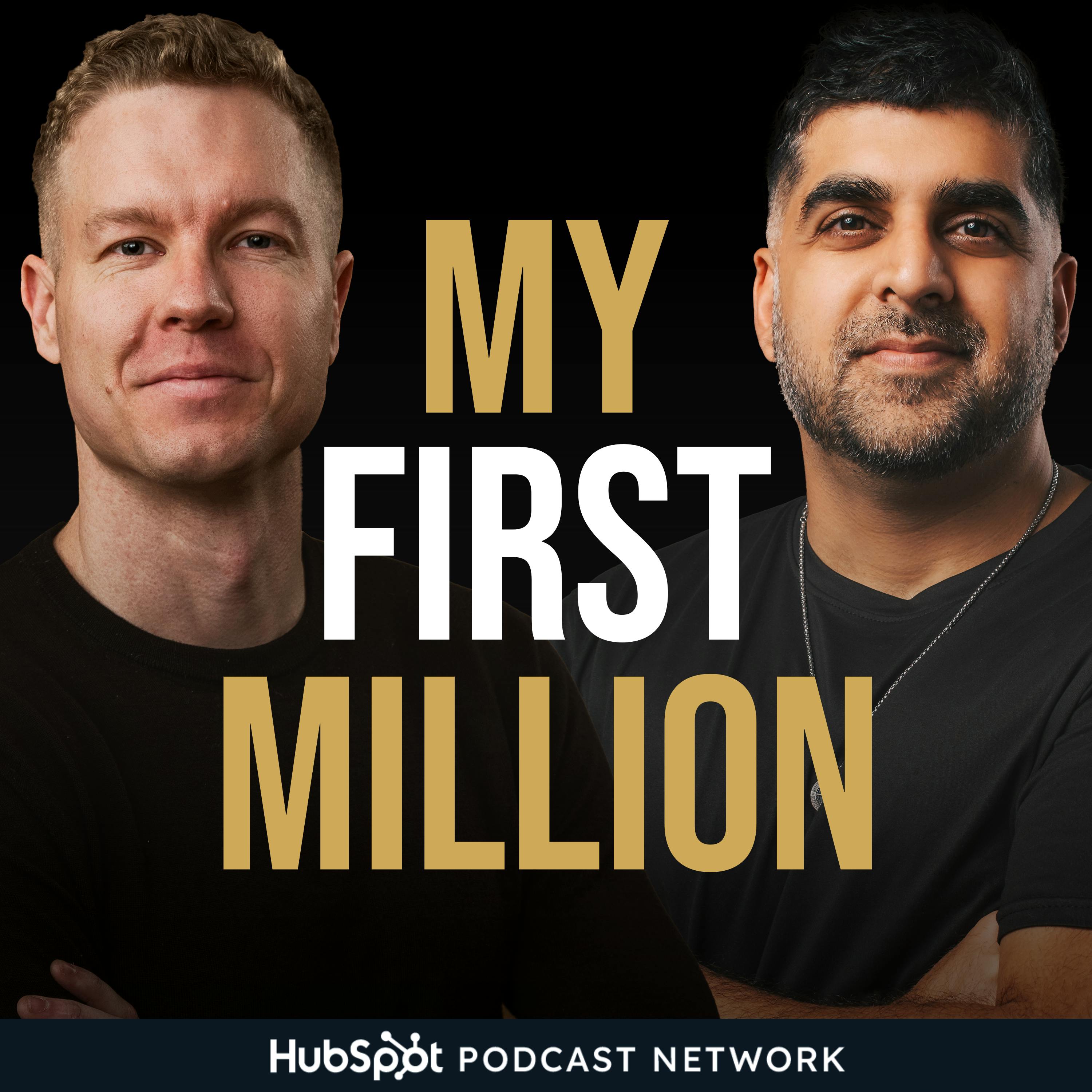
November 4, 2024 • 56min
3 Killer Businesses Hidden in Plain Sight
My First Million

Key Takeaways
- The episode explores three "hidden in plain sight" businesses that took free things and turned them into profitable products:
- Water quality testing app (hundreds of thousands in revenue)
- Labor law posters (millions in revenue)
- Barcodes (hundreds of millions in revenue)
- The hosts discuss how marketing campaigns have shaped cultural traditions and behaviors, including:
- Casual Friday (created by Levi's to sell Dockers)
- Diamond engagement rings (De Beers "Diamonds are Forever" campaign)
- Breakfast as "most important meal" (Kellogg's)
- Baby showers (Johnson & Johnson)
- Wedding registries (Macy's)
- Key insight: Many everyday products, traditions and behaviors we take for granted were deliberately created through marketing campaigns
Introduction
Sam Parr and Shaan Puri explore businesses that have found ways to monetize free things and discuss how marketing campaigns have shaped cultural behaviors and traditions. The episode provides fascinating insights into entrepreneurial opportunities hiding in plain sight and the power of marketing to influence society.
Topics Discussed
Water Quality Testing App - Oasis (0:00)
- Founded by Cormac from Minnesota who noticed water quality differences after moving to LA
- App aggregates free public water quality data and charges $45-49/year for full reports
- Currently generating ~$40,000/month in revenue
- Markets through viral TikTok videos about water quality issues
- Shows potential to grow much larger as water quality concerns increase
Labor Law Posters Business (8:26)
- Companies legally required to display labor law posters in workplaces
- Business model:
- Send official-looking letters to businesses about compliance requirements
- Charge $45 for posters that are actually available free from government
- Generate millions in revenue through high margins and recurring annual sales
- Succeeds by making compliance easy and leveraging fear of non-compliance
Barcode Business - GS1 (15:22)
History and evolution of barcodes:
- Invented by Norman Woodland and Bernard Silver, inspired by Morse code
- Initially struggled to find practical applications
- Breakthrough came in 1974 with grocery stores needing inventory tracking
- GS1 became central authority for issuing barcodes
- Current status:
- $81 million annual revenue (93% from barcode sales)
- $416 million in assets
- CEO makes $3 million/year
Casual Friday Marketing Campaign (22:55)
- Created by Levi's to sell Dockers khakis in late 1980s
- Strategy:
- Distributed 40,000 pamphlets to HR professionals about "business casual"
- Created HR hotline for dress code questions
- Subtly featured Dockers in example photos
- Successfully changed workplace culture and drove massive sales growth
Cultural-Shaping Marketing Campaigns (28:44)
- De Beers "Diamonds are Forever" campaign
- Created 2-3 months salary engagement ring standard
- Established diamonds as symbol of love/marriage
- Kellogg's "Breakfast is most important meal"
- Johnson & Johnson created baby shower tradition
- Macy's invented wedding registry concept
- Lysol created spring cleaning tradition
"Torches of Freedom" Campaign (40:06)
- 1929 campaign to increase cigarette sales to women
- Used influencers of the time to smoke in public as act of female empowerment
- Successfully linked smoking to women's liberation movement
- Demonstrated power of marketing to shape social behavior
Yale Campus Visit Reflection (44:42)
- Sam visits Yale campus, joins student tour
- Meets podcast fan who gives personal tour
- Visits historical sites including:
- Skull & Bones society building
- America's oldest graveyard
- Graves of Noah Webster and Charles Goodyear
- Reflects on importance of creating lasting impact
YC Campus Idea (50:59)
- Discussion of creating physical campus for Y Combinator
- Potential benefits:
- Free room and board for founders
- Access to investment opportunities
- Creating institutional presence
- Comparison to Museum of American Finance in NYC
Conclusion
The episode highlights how entrepreneurial opportunities often exist in plain sight and can involve monetizing freely available information or resources. It also demonstrates the profound impact marketing campaigns can have in shaping cultural behaviors and traditions that we now take for granted. The hosts emphasize the importance of keeping eyes open for business opportunities in everyday life and understanding how successful institutions are built over time.